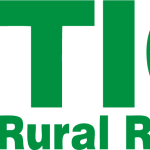
Last week I introduced the new extended series on phosphorus (P) management proficiency. This week I am writing about differing philosophies or approaches in managing phosphorus (P). The two major approaches are sufficiency and build-maintain. The sufficiency approach, also called deficiency correction, attempts to eliminate plant P deficiency in the current growing season based on the soil test value and P fertilizer rate. The build and maintain approach, which really means build, maintain, and drawdown approach attempts to build or drawdown soil test P into a target soil test P range above a critical soil test P level and eliminate any yield loss potential. Maintenance rates or crop removals rates of P fertilizer are applied once in the target soil test P range.
Farmers, independent crop consultants, soil-testing labs, Coops, universities and others differ in their approach. I know farmers and agronomists that utilize both approaches based on security of land-tenure. They use the sufficiency approach for year-to-year verbal leases with uncertain land-tenure versus build-maintain approach for long-term leases and owned farmland. I have found merit in using both approaches depending on the situation my client is in. What are the strengths and weaknesses of these two approaches and when would I recommend one over the other? Land-tenure uncertainty, limited financial resources, and environmental concerns are the three reasons that I often recommend the sufficiency approach. Capitalizing on manure resources, applying more P when fertilizer prices are low, flexibility in skipping P applications in low profit years, high P demand crop in the rotation, and land ownership are some of the reasons I recommend the build-maintain approach.
The critical soil test P value is the point above which there is a low probability of a yield response to additional P fertilizer. The crop P removal rate is greater than the applied P rate near the critical value in the sufficiency approach while the build-maintain approach would recommend more to match the estimated grain P removal rate, which increases soil test P slightly. For example, a 220 bushel per acre corn crop would remove approximately 73 pounds (lbs) of P205 (oxide expression of P used in U.S. fertilizer standards) per acre that is equivalent to 140 pounds Monoammonium Phosphate (MAP is 52% P205) fertilizer per acre. Let’s assume the critical soil test P value for corn is 20 parts per million (ppm). If the soil test P value was 17 ppm on a soil test report, then the recommended P fertilizer rate for 220 bushel per acre corn may be 29 lbs of MAP fertilizer per acre, but could be 161 lbs of MAP per acre with the build-maintain approach. I would expect a yield response to both approaches and maybe a little more with the build-maintain approach. I would expect a higher return per pound of phosphorus with the sufficiency approach, but the soil test value would decrease slightly, but increase slightly with the build-main approach.
I encourage you to contact me with questions and to suggest topics for me to write about in regards to phosphorus management, so email me (), leave a comment on my website, or give me a call (402-821-1722). Next week’s column on phosphorus management proficiency will be about a 2018 study that compared phosphorus management philosophies in corn. As a reminder, you can share or read this news column online through my local website for Saline, Jefferson, and Gage counties at croptechcafe.org. Know your crop, know your tech, know your bottom line.


